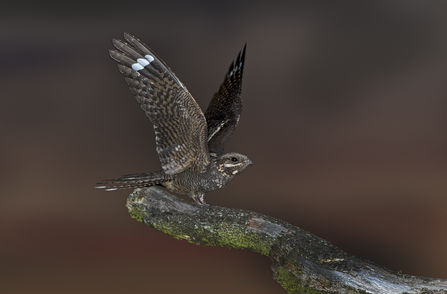At 8.30 pm on a sultry Thursday evening in the dying days of June around 30 SWT staff and volunteers gathered on Barossa Common in Camberley to take part in a vital ritual – the annual Nightjar survey. Over recent decades these incredible, perfectly-camouflaged birds have faced steep population declines due to habitat loss and the drop in insect numbers, but there are promising signs that across sites managed by SWT and other responsible landowners, populations are rebuilding. It’s vital that we monitor the fortunes of this sensitive species closely.
Breaking into small parties, the citizen scientists wander the pathways around carefully-prescribed areas of the site, noting the precise locations and timings of any Nightjar calls or sightings (male Nightjars make a mechanical ‘churr’ and undertake short display flights to proclaim their territories and attract females). At the end of the evening, Conservation Manager Adam Bolton has enough data to form a decent estimate of the size of the population, using the precision nature of the records taken to minimise the risk of double counting. By 11pm, the final tally suggests that we have identified some 40 breeding territories; a healthy population of Nightjars still calls Barossa home.


